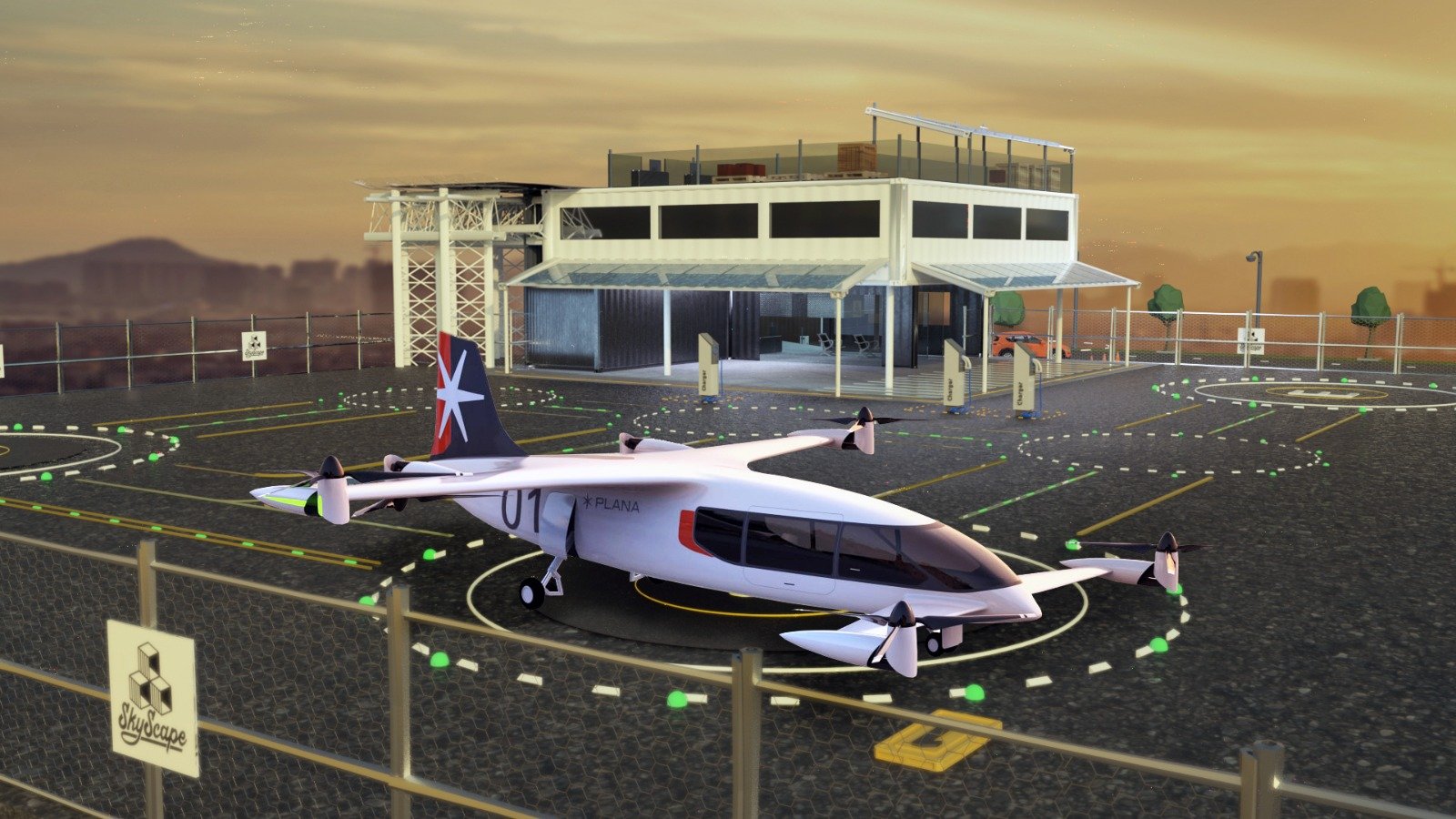Despite the challenges posed by the extended and still somewhat uncertain certification timelines for eVTOL aircraft, Japan-based SkyScape is adopting an urban-planning approach to guide its philosophy for long-term development of vertiports.
“Investing in the future is innately difficult,” stated founder and president Asa Quesenberry in an interview with FutureFlight. “Establishing advanced air mobility infrastructure becomes a tough proposition when the aircraft won’t arrive for another three to four years. It’s a difficult sell. Some groups won’t make it to the starting line.”
With a background in urban planning and architecture, Quesenberry has been conducting outreach to build coordination and consensus among regional governments, communities, and industry groups as it looks to develop a robust network of modular vertiport facilities across Japan’s prefectures. The company’s focus is on introducing three vertiport products catering to low, middle, and high-end markets, respectively. It estimates that the cost for a minimalist, mobile-style vertiport that can be rapidly deployed starts at $350,000.
“The industry is asking: What are the returns if I build this facility? For me, that’s the wrong question,” Quesenberry said, maintaining that proper vertiport operations require the distribution of resources across multiple locations with each vertiport serving a specific purpose such as storage, charging, or drop-off points, to name a few.
Advanced Air Mobility Must Benefit Communities, Not Just Companies
“At SkyScape, we focus on evaluating the return of a vertiport network within a specific region as opposed to a single location. This is where the economics start to make sense,” Quesenberry stated. “We firmly believe that by developing specialized ports tailored to specific use cases and launching them in a low-cost, low-risk manner, such as short-term leases, we can make these facilities accessible to a wide range of groups and quickly develop AAM [Advanced Air Mobility] networks that create real value for the communities supporting them.”
The Japanese government has delayed defining vertiports until at least 2026, classifying them as off-site helipads until then. While the local authority is watching the FAA closely, Quesenberry, who is originally from Delaware, said the size requirements outlined by the FAA present challenges for countries like Japan, which has limited land for development.
“I believe the renewed global focus on AAM has kicked off one of the largest challenges of urban planning in modern history," Quesenberry added. "We are attempting to integrate aviation into the day-to-day urban and regional ecosystem, opening it up to a larger audience who can truly benefit from the recent advances in the industry—not limited to simply improved travel. At its core, urban planning understands where everything connects together. Community well-being takes center stage in successful urban planning, where infrastructure, logistics, and networks are strategically designed to directly benefit communities. If it doesn’t help communities. it will never work.”
New Partnerships across the Asia-Pacific Region
In preparation, SkyScape is building partnerships in the Asia-Pacific region and recently inked an agreement with South Korean hybrid-electric eVTOL manufacturer Plana to launch the first eVTOL route between Japan and Korea. The group has also welcomed a new executive advisor, José Oller-Sánchez, who previously served as executive VP of operations for budget airline Peach Aviation and executive VP of service and operations at Dubai Airports.
“Large swaths of the Asia-Pacific region consist of numerous islands, remote and aging communities, and challenging terrains,” said Oller-Sánchez. “This is particularly true here in Japan, and eVTOLs overcome these geographical barriers and can provide improved connectivity to remote islands, across mountainous terrain, or in areas with limited road infrastructure, bridging the gap between communities and essential services such as healthcare and emergency response, in addition to improving basic transportation of people.”
Regarding community buy-in, Oller-Sánchez added that Japan has been quick to accept the utility of rapidly deployable and economical aircraft, such as humanitarian quadcopter drones, in areas disrupted by severe weather and earthquakes.
“While initial eVTOL services may be relatively expensive, communities will be quick to recognize the value,” he concluded. “Likewise, as technology matures and economies of scale come into play, costs are expected to decrease, making them more accessible to a broader range of travelers and purposes. We hope to play a significant role in making that happen.”
